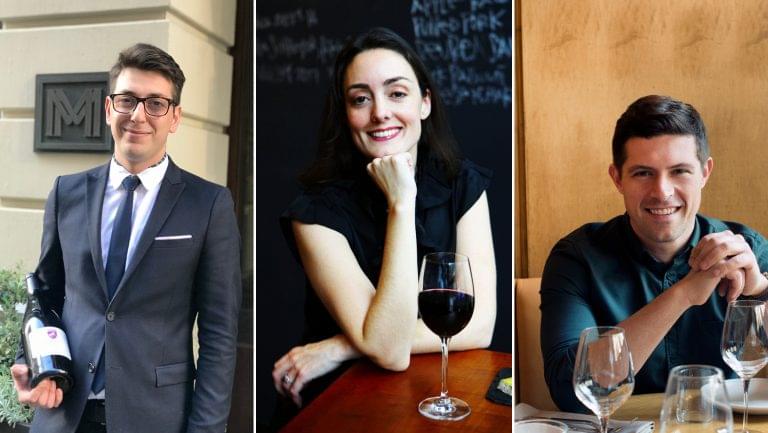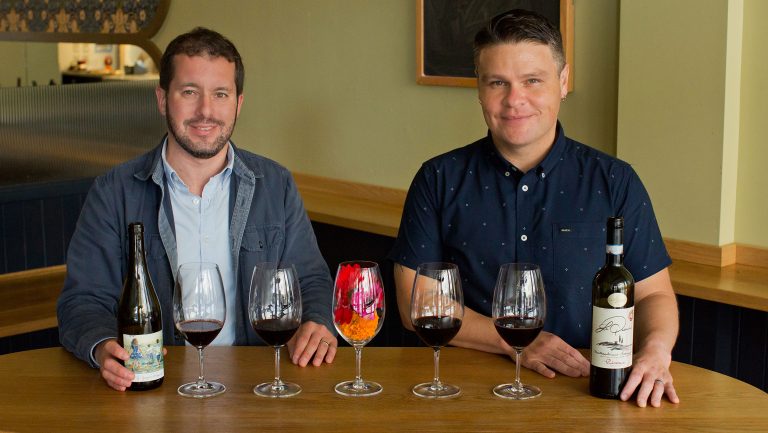After reveling in the accomplishment of landing that very first wine director role, you’re faced with the hard work of actually launching and running a wine program. From budgeting and pricing to planning and ordering, the first months of running a new wine program entail dozens of high-priority tasks that have to be juggled. To give first-time wine directors a better sense of what to expect, SevenFifty Daily asked three established directors to weigh in on best practices for getting a new wine program off the ground.
1. Start with a budget.
While the newfound freedom of running your own wine list may create the temptation to order stock without restraint, wine directors must remember to keep not only the content of a wine program but its financial success a top priority. “It can be exciting and empowering to be able to order wine on the restaurant’s dime,” says Joe Campanale, the founder and wine director of Fausto in Brooklyn, New York, “but don’t let it go to your head.” Campanale suggests that you consider the beverage budget first. For example, he says, “your highest-margin wines should be your by-the-glass wines, since you’re selling them the most on any given night.” In comparison, only a small portion of the initial budget should be devoted to wines that won’t move quickly. And remember—it isn’t just wine that the wine director must budget for. “Make sure to account for [stemware] breakage,” says Mandy Oser, the owner and wine director of Ardesia Wine Bar in Manhattan. “It’s literally money down the drain, so think about your cost per piece.”
2. Designate a focus for your program.
For a sommelier who has been itching to helm a program, choosing a direction is key. Narrowing the focus of the wine program can help make choosing bottles less overwhelming; it also helps ensure that the program has a level of specificity to differentiate it from the competition. Oser recommends developing a “mantra of sorts.” To do this, she says, “put into a sentence or two what your wine program is about.” Her mantra for her own program is Ardesia juxtaposes classic expressions of Old World grapes alongside innovative New World versions, with a focus on small producers. “Even with this broad scope,” she says, “we are able to eliminate so many wines that don’t fit.” In addition, Campanale emphasizes the importance of listing only wines that you really stand behind. “Don’t try to convince yourself that you like a wine because you think you should,” he says. “Find wines that you truly love, and it’ll be easier to sell them to the guest.”

Don’t miss the latest drinks industry news and insights. Sign up for our award-winning newsletters and get insider intel, resources, and trends delivered to your inbox every week.
3. Price wines strategically.
There is no set formula for pricing wines, and even the cost of goods sold for a wine program varies from one establishment to another—Campanale notes that it can range from 20 to 35 percent. Laura Staley, the wine director of Island Creek Oyster Bar in Burlington, Massachusetts, looks for opportunities to boost revenue with her by-the-glass list. “If you can find good deals for BTG,” she says, “it allows you to have more fun and flexibility with your bottle program.” But there’s no one-size-fits-all formula for every BTG pour. “My markup on sparkling wine is very low because I want to encourage bubbles and bivalves,” Staley says. “You have to be flexible and really keep an eye on sales as you figure out what works for you.”
4. Stock the cellar as a team.
While it may be ideal to order and organize inventory weeks before opening, some restaurants don’t have the space or budget to do so. That can actually provide an opportunity for new front-of-house teams to learn how to work together. “I generally like to order everything in one or two days,” Campanale says, “and make it a team-building activity to put the wine cellar together.” Not only do staff members get to know one another, but they get hands-on experience with the wines and the cellar’s organizational structure. Jeremy Shanker, the lead sommelier for Michael Mina in San Francisco, suggests familiarizing new staff with the structure of the wine list as soon as possible so they have a chance to develop a solid understanding of it. One way to do this, he says, is to implement “a fun sales incentive” for strategic training, such as offering a reward to the first staff member to sell a set number of bottles from a designated category of the wine list.
5. Put organizational systems into place.
“Spend the time to create a clear-cut cellar map so that absolutely anyone can pull from the cellar if you’re not there,” Campanale advises. Oser says that she posts laminated maps in Ardesia’s wine refrigerators that can be changed using dry-erase markers, and she color-codes bottles in the cellar. “It’s very quick,” she says, “and it’s incredible how a little bit of color will help your eye get to the bottles you need.” While more robust wine programs may benefit from implementing formal inventory software from the beginning, Staley finds that a tried-and-true spreadsheet is adequate for her team.

6. Plan for lower wine sales at first.
Wine sales may be slow to pick up in the early days of a new wine program. Not only does it take time to attract a following, but there’s a learning curve for the servers as they get to know the wine list and sell effectively to guests. “No matter what,” Oser says, “assume the lightest sales in your financial model so that you’re not caught off guard.” Knowing that wine sales are likely to take a bit of a hit in the beginning, you can take time to explain the wine offerings to guests and build trust with them. You can also help convey the program’s core philosophies by opening bottles and offering guests tastes. “I empower my staff to feel good about opening something from the bottle list to promote the program, especially in the beginning,” Staley says. “There was a lot of free wine [at Island Creek] at first,” she says, reiterating the necessity to always “track and account for it.”
7. Manage ordering and tasting appointments efficiently.
Each wine director has his or her individual preferences when it comes to ordering wine, scheduling deliveries, and conducting tasting appointments, but less is often more. Campanale, Staley, and Oser all suggest limiting ordering and deliveries to once or twice a week. Regularly reviewing sales can make planning easier. Shanker also suggests taking advantage of inventory and sales management tools to help “manage inventory, track sales, and identify how much wine you need to purchase over the course of a month.” Such tools, he says, “can also help you review year-over-year sales and project future net sales.” To streamline tasting appointments, Campanale suggests that a wine director designate a regular time frame and create criteria for reps. For example, he blocks off a two-hour window each week and sends reps guidelines of what he’s looking for before the appointments. “By doing this,” he says, “I’m maximizing my time and theirs.”
8. Analyze and adjust buying practices.
Running lean on inventory at first can give a new wine director more flexibility to adjust the program after a few months. “Keeping an eye on cash flow is especially important during this time,” Campanale says, “so I would recommend buying smaller quantities so that resources don’t get tied up in inventory if you end up pivoting in your buying practices.” The wines that are hits with guests typically become apparent during this time, he adds, as do staff favorites, so the new wine director can decide which bottles to order in bulk and which ones to drop from the list.

Dispatch
Sign up for our award-winning newsletter
Don’t miss the latest drinks industry news and insights—delivered to your inbox every week.
Courtney Schiessl Magrini is the editor-in-chief for SevenFifty Daily and the Beverage Media Group publications. Based in Brooklyn, she has held sommelier positions at some of New York’s top restaurants, including Marta, Dirty French, and Terroir, and her work has appeared in Wine Enthusiast, GuildSomm, Forbes.com, VinePair, EatingWell Magazine, and more. She holds the WSET Diploma in Wines. Follow her on Instagram at @takeittocourt.







